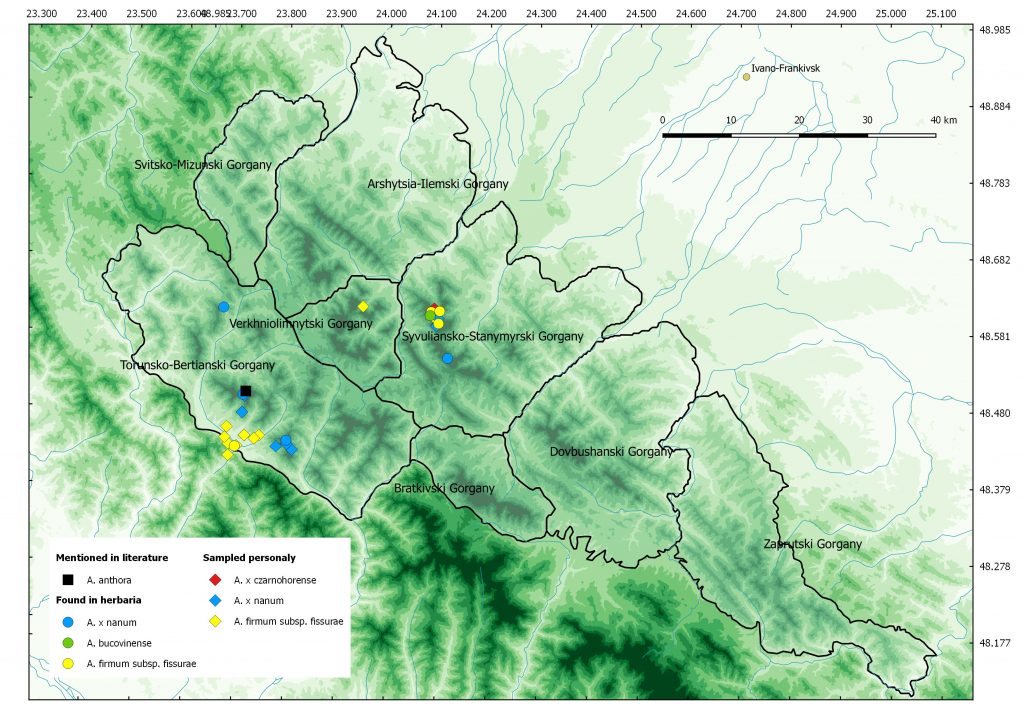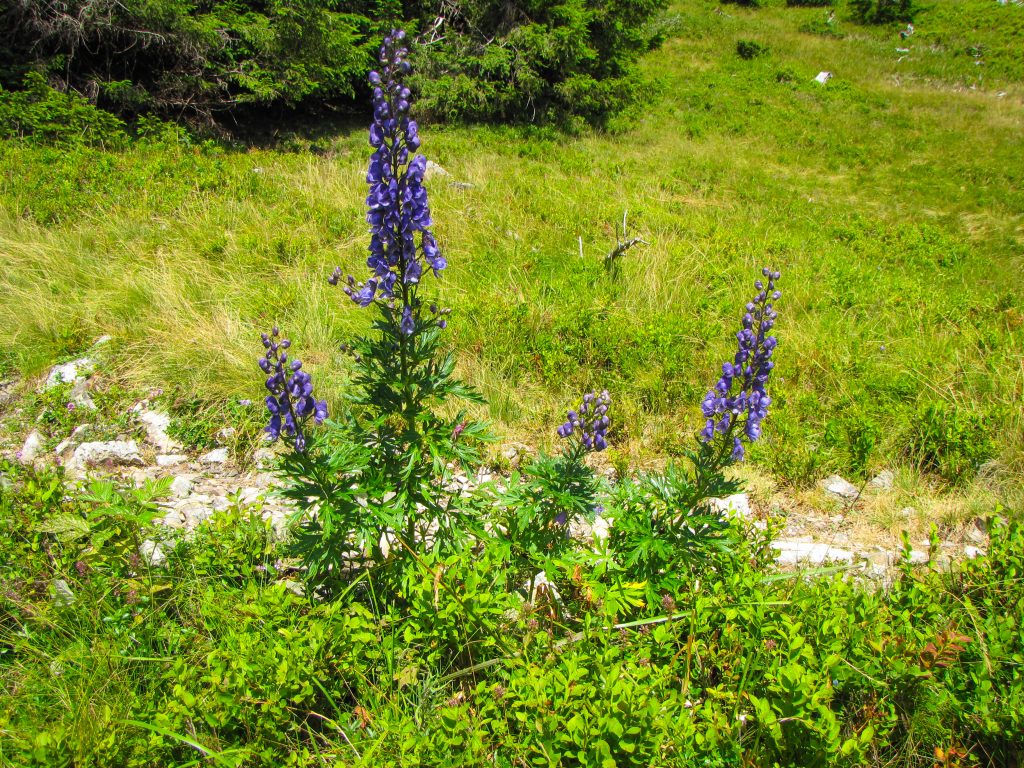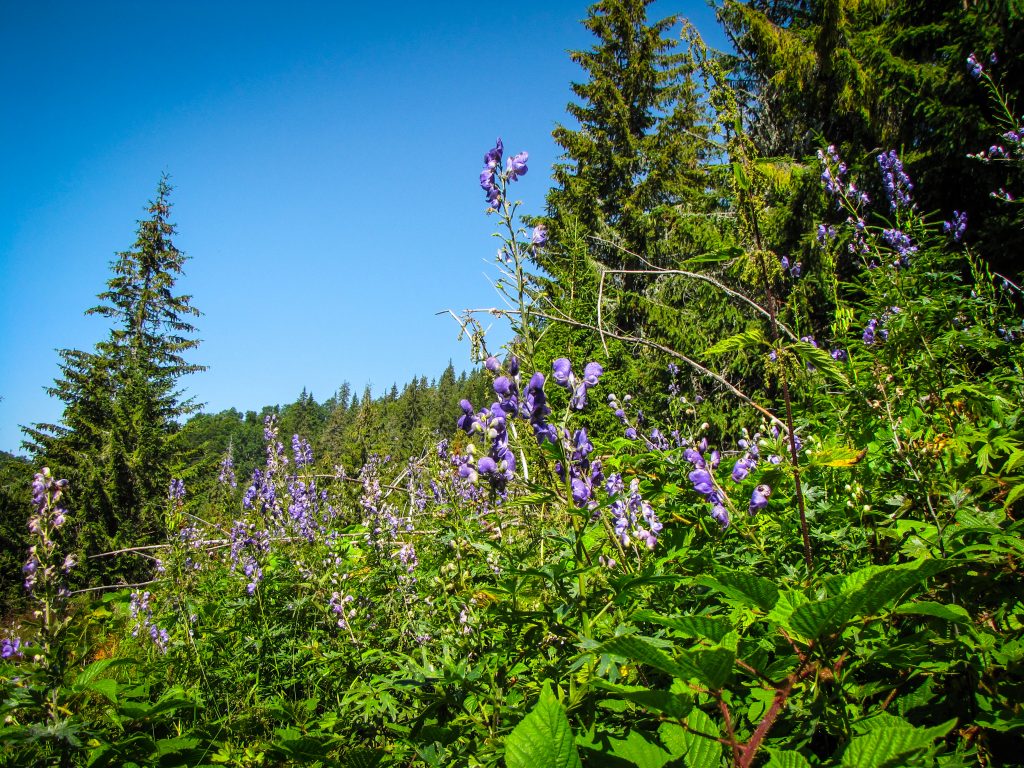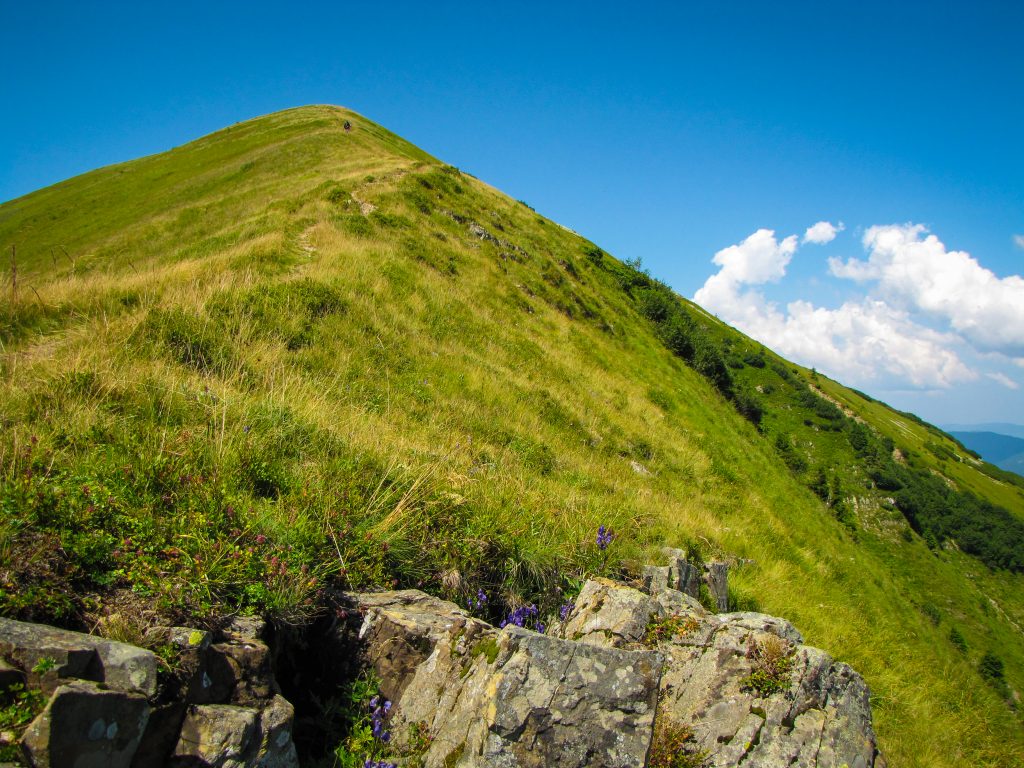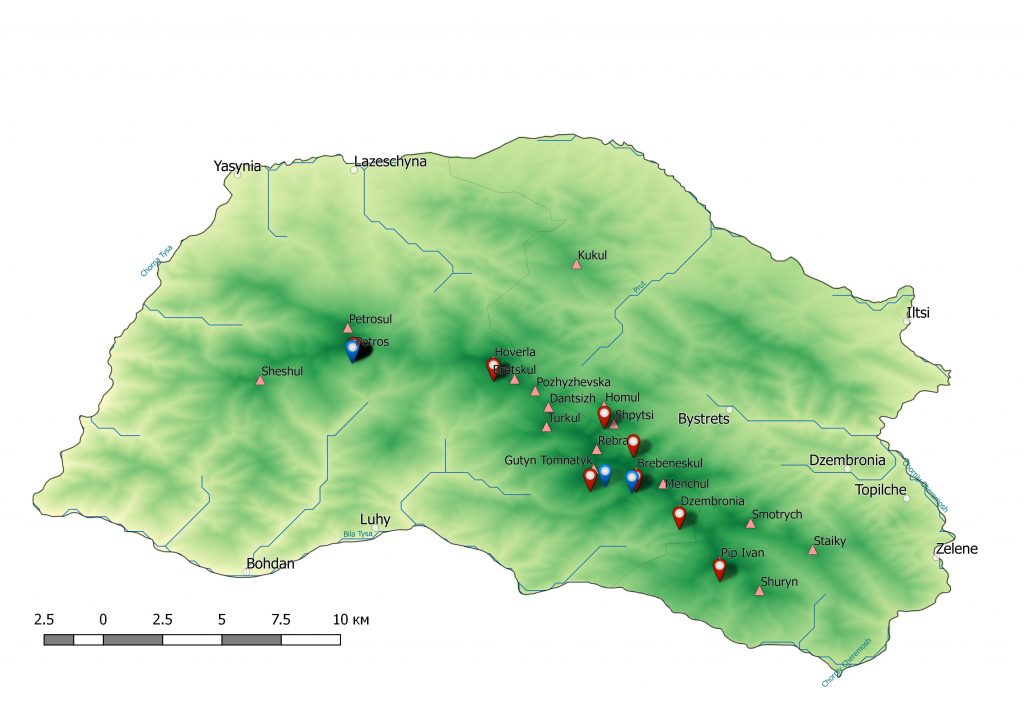Ecological preferences: Heliophytes, rarely – scio-heliophytes; mesophytes or meso-xerophytes, rarely – hygro-mesophytes; acidophils, rarely – peracidophils or subacidophils.
Distribution and habitats in Ukrainian Carpathians: The one of the most distributed high-mountain monkshoods in Eastern Carpathians. In Ukrainian Carpathians it occurs in Chornohora, Svydovets, Gorgany, Marmarosh, as well as in Polonynas and Eastern Beskids. The plats very often grow in mixed populations together with A. firmum, A. × czarnohorense and sometimes – with A. bucovinense. The species is related to alpine and subalpine belts, but also occurs in higher montane belt. These plants grow on stone screes, in cracks of the rocks, in natural depressions and low cavities, and sometimes occur near the streams and highmountain lakes. The species take a part in numerous communities such as Pulmonario - Alnetum viridis, Juniperetum sibiricae, Pinetum mughi, Caricetum sempervirens, Aconitetum firmi, Ranunculo platanifolii-Adenostyletum alliariae, Primulo-Caricetum curvulae, and Poo-Deschampsietum.
Distribution and habitats in Chornogora: Together with A. × czarnohorense it is one of the most distributed high-mountain Aconitum species in Chornogora. There are known several main mixed populations on mountains Petros and Brebeneskul, as well near the lake Brebeneskul which consist of about 1000-1500 plants of mostly pregenerative and generative age, and which cover about 2 km2. Mentioned populations are in good and prosperous conditions with normal vitality. In Chornogora the species is known from Caricetum sempervirens, Aconitetum firmi, Ranunculo platanifolii-Adenostyletum alliariae, and Poo-Deschampsietum communities on cambic leptosols and umbric or mоllic gleysols.
Distribution and habitats in Gorgany: In Gorgany this species growths together in mixed populations with other taxa from Napellus group (A. × czarnohorense, A. firmum, and A. bucovinense). Hence, I collected it just from two populations located in Torunsko-Bertianski Gorgany (with three isolated subpopulations on Mt. Stymba, Negrovets Mt. range and, probably, on Mt. Polianka) and Syvuliansko-Stanymyrski Gorgany (with two isolated subpopulations located on Igrovets Mt. and, probably, Syvulia Mt.). It is quite difficult to count the number of plants representing such taxa growing in mixed populations, but I can assume that there are at least 5000 mostly generative and pregenerative individuals of A. × nanum in Gorgany mountains, scattered commonly in subalpine belt or sometimes going down to lower altitudes along the trails and wood cuttings. They take a part in Deschampsietum caespitosum, Poo-Deschampsietum, Arunco-Doronicetum austriaci, Rubetum idaei, Polygalo-Nardetum, Hyeracio vulgati – Nardetum, and Senecionetum fuchsii communities.
Threats: Trampling by tourists, burning of habitats, overgrowing of habitats by woody plants. In Ukrainian Carpathians it has VU category and together with A. firmum, A. × czarnohorense and A. bucovinense requires strict protection (most probably as aggregated taxon).
